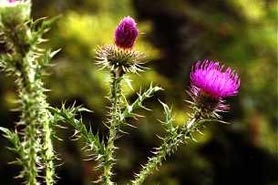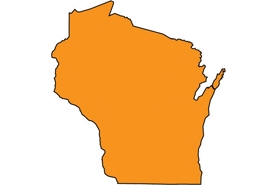Plumeless thistle
(Carduus acanthoides)
Large herbaceous biennial. When the plant bolts in the second year it can be three to six feet tall. Stems are freely branching and have leaf-like spines.
Other names for this plant include:
- Common words: spiny plumeless thistle, welted thistle
Classification in Wisconsin: Restricted
- Ecological Threat
-
- Infest low-quality areas first, such as roadsides, disturbed areas, ditch banks and old fields. Spreads into high-quality prairies.
- In meadows and pastures, grazing animals avoid plumeless thistles and focus on native plants giving the invasive the upper hand.
- Identification
-
First-year plants-leaves: First-year rosette leaves are up to two inches long, deeply divided with lobes ending with spines.
Second-year plants-Leaves: Dark green with light green midrib and hairy on the underside; leaves are deeply divided with lobes ending in a spine.
Flowers: Red-purple flowers singly or in clusters. Flower heads are up to one inch in diameter.
Fruits & seeds: Up to 10,000 seeds per plant with seeds disperse within seven to 10 days of flowering. Seeds are viable in the soil for more than ten years.
Roots: Single taproot.
Similar species: Musk thistle (Carduus nutans) is very similar except the solitary flower is much larger, 1 1/2 to three inches wide and slightly nodding. The leaves are also hairless on both sides.
- Control
-
Mechanical: Close mowing of second-year plants twice per growing season just before flowering. Cut or mow at early bud both times. Cut plants with a sharp shovel one to two inches below the soil surface before flowering.
Chemical: Spot spray rosettes in fall with 2, 4-D ester; foliar spray with clopyralid or metsulfuron-methyl.
- Resources
- Sources for content:
- Czarapata, Elizabeth; Invasive Plants of the Upper Midwest: an illustrated guide to their identification and control. The University of Wisconsin Press. 2005. Pg. 101-102



